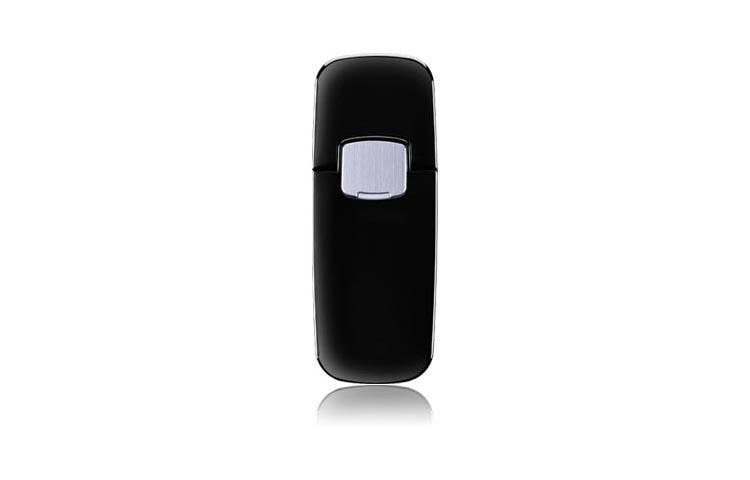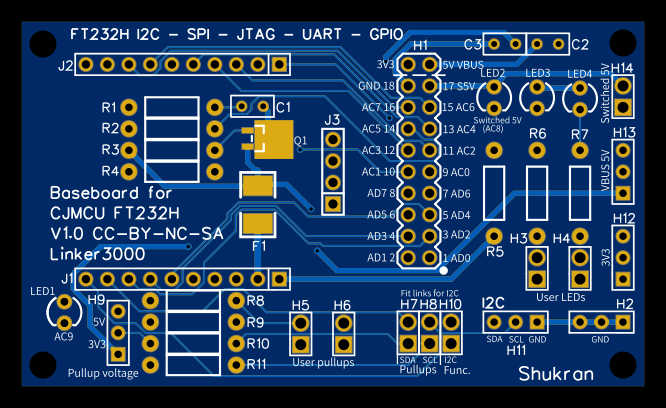Drivers HES USB Devices
Virtual COM port (VCP) drivers cause the USB device to appear as an additional COM port available to the PC. Application software can access the USB device in the This page contains the VCP drivers currently available for FTDI devices. For D2XX Direct drivers, please click here. Microsoft-provided USB drivers USB device-side drivers in Windows A set of drivers for handling common function logic for USB devices. USB host-side drivers in Windows Microsoft provides a core stack of drivers that interoperate with devices that are connected to EHCI and xHCI controllers. So plug out the device, reboot the computer and plug it back in to see if anything changes. Sometimes your USB device, which is plug-and-play nature really need a set of codes, in this case known as a driver, to interact with your device. If the computer prompts you to install a driver, let it try. 2) Expand Universal Serial Bus controllers. Right-click a device and select Uninstall. Repeat for each device. 3) Restart your PC and your USB controllers will automatically re-installed. Your computer will then recognize the USB device if the issue occurred because the currently loaded USB driver has become unstable or corrupted.
-->Universal Serial Bus (USB) provides an expandable, hot-pluggable Plug and Play serial interface that ensures a standard, low-cost connection for peripheral devices such as keyboards, mice, joysticks, printers, scanners, storage devices, modems, and video conferencing cameras. Migration to USB is recommended for all peripheral devices that use legacy ports such as PS/2, serial, and parallel ports.
The USB-IF is a Special Interest Groups (SIGs) that maintains the Official USB Specification, test specifications and tools.

Windows operating systems include native support for USB host controllers, hubs, and devices and systems that comply with the official USB specification. Windows also provides programming interfaces that you can use to develop device drivers and applications that communicate with a USB device.
| USB in WindowsWindows 10: What's new for USB Overview of new features and improvements in USB in Windows 10. USB FAQFrequently asked questions from driver developers about the USB stack and features that are supported in USB. Microsoft OS Descriptors for USB DevicesWindows defines MS OS descriptors that allows better enumeration when connected to system running Windows operating system Microsoft-provided USB driversUSB device-side drivers in WindowsA set of drivers for handling common function logic for USB devices. USB host-side drivers in WindowsMicrosoft provides a core stack of drivers that interoperate with devices that are connected to EHCI and xHCI controllers. USB-IF device class driversWindows provides in-box device class drivers for many USB-IF approved device classes, audio, mass storage, and so on. USB generic function driver–WinUSBWindows provides Winusb.sys that can be loaded as a function driver for a custom device and a function of a composite device. USB generic parent driver for composite devices–UsbccgpParent driver for USB devices with multiple functions. Usbccgp creates physical device objects (PDOs) for each of those functions. Those individual PDOs are managed by their respective USB function drivers, which could be the Winusb.sys driver or a USB device class driver. WDF extension for developing USB drivers
Get information about the tools that you can use to test your USB hardware or software, capture traces of operations and other system events, and observe how the USB driver stack responds to a request sent by a client driver or an application. Read an overview of tests in the Hardware Certification Kit that enable hardware vendors and device manufacturers to prepare their USB devices and host controllers for Windows Hardware Certification submission. Other Resources for USB Official USB SpecificationProvides complete technical details for the USB protocol. Microsoft Windows USB Core Team BlogCheck out posts written by the Microsoft USB Team. The blog focuses on the Windows USB driver stack that works with various USB Host controllers and USB hubs found in Windows PC. A useful resource for USB client driver developers and USB hardware designers understand the driver stack implementation, resolve common issues, and explain how to use tools for gathering traces and log files. OSR Online Lists - ntdevDiscussion list managed by OSR Online for kernel-mode driver developers. Windows Dev-Center for Hardware DevelopmentMiscellaneous resources based on frequently asked questions from developers who are new to developing USB devices and drivers that work with Windows operating systems. USB-related videos UWP apps for USB devicesUnderstanding USB 3.0 in Windows 8Building great USB 3.0 devicesUSB Debugging Innovations in Windows 8 (Part I, II, & III)USB hardware for learning MUTT devicesMUTT and SuperMUTT devices and the accompanying software package are integrated into the HCK suite of USB tests. They provide automated testing that can be used during the development cycle of USB controllers, devices and systems, especially stress testing. OSR USB FX2 Learning KitIf you are new to USB driver development. The kit is the most suitable to study USB samples included in this documentation set. You can get the learning kit from OSR Online Store. | Write a USB client driver (KMDF, UMDF) Introduces you to USB driver development. Provides information about choosing the most appropriate model for providing a USB driver for your device. This section also includes tutorials about writing your first user-mode and kernel-mode USB drivers by using the USB templates included with Microsoft Visual Studio. Write a USB host controller driverIf you are developing an xHCI host controller that is not compliant with the specification or developing a custom non-xHCI hardware (such as a virtual host controller), you can write a host controller driver that communicates with UCX. For example, consider a wireless dock that supports USB devices. The PC communicates with USB devices through the wireless dock by using USB over TCP as a transport.
You can develop a controller driver that handles all USB data transfers and commands sent by the host to the device. This driver communicates with the Microsoft-provided USB function controller extension (UFX). USB function class extension (UFX) reference Write a USB Type-C connector driverWindows 10 introduces support for the new USB connector: USB Type-C. You can write a driver for the connector that communicates with the Microsoft-provided class extension module: UcmCx to handle scenarios related to Type-C connectors such as, which ports support Type-C, which ports support power delivery. USB connector manager class extension (UcmCx) reference Write a USB dual-role controller driverUSB Dual Role controllers are now supported in Windows 10. Windows includes in-box client drivers for ChipIdea and Synopsys controllers. For other controllers, Microsoft provides a set of programming interfaces that allow the dual-role class extension (UrsCx) and its client driver to communicate with each other to handle the role-switching capability of a dual-role controller. For more information about this feature, see: USB dual-role controller driver programming reference Write a USB driver for emulated devicesWindows 10 introduces support for emulated devices. Now you can develop an emulated Universal Serial Bus (USB) host controller driver and a connected virtual USB device. Both components are combined into a single KMDF driver that communicates with the Microsoft-provided USB device emulation class extension (UdeCx). Emulated USB host controller driver programming reference Write a UWP appProvides step-by-step instructions about implementing USB features in a UWP app. To write such an app for a USB device you need Visual Studio and Microsoft Windows Software Development Kit (SDK) . Write a Windows desktop appDescribes how an application can call WinUSB Functions to communicate with a USB device. WinUSB functions Common programming scenariosList of common tasks that a driver or an app performs in order to communicate with a USB device. Get quick info about the programming interfaces you need for each task. USB samples Development tools Download kits and tools for Windows |
There may come a time when your Windows 10-powered machine will just not recognise a USB device. This issue has existed on Windows since the days of Windows 98, and sadly, Windows 10 also seems to have inherited the quirk. Thankfully it isn’t difficult to make your device detect your USB device. Follow the below-mentioned methods to see if your computer gains senses and stars detecting your device.
Restart
As Moss and Roy famously put it in The IT Crowd TV show, a simple restart can do wonders for you. So plug out the device, reboot the computer and plug it back in to see if anything changes.
Driver Issue


Sometimes your USB device, which is plug-and-play nature really need a set of codes, in this case known as a driver, to interact with your device. If the computer prompts you to install a driver, let it try. If it doesn’t, go to Control Panel > Printers and devices to see if there is any Unidentified USB device or Unknown device listed there. In case there is, go to its Properties and update its driver. You might again need to reboot the machine, Alternatively, you might want to visit USB device’s manufacturer website to get a driver for it.
Plug-out all other USB devices
Find My Usb Device
If your newly inserted device isn’t getting read by the computer, try disconnecting other USB devices to see if anything helps. Sometimes having multiple devices on the machine may create a conflict.
:max_bytes(150000):strip_icc()/usbinwindowshardwarelist-cbee81359c534643843e4c9564302fb0.jpg)
Fix USB Root Hub
If the aforementioned methods still don’t make your device recognisable, you could try opening Device Manager, expanding USB Serial Bus controllers. Once there, right click on USB Root Hub and click Properties. Click on the Power Management tab and uncheck the option that says “Allow the computer to turn off this device to save power”. If there are more than one USB Root Hub listed, you will need to perform the same with every entry. Click OK and restart your computer. Plug back the USB device in and see if the computer is able to recognise it.
Drivers Hes Usb Devices Download
Try a different computer / operating system
Free Download For Usb Driver For Device
If your USB device is still not showing up on the system, you might want to try it on any other device, and also check if it works on any other operating system. In case it does, transfer all your important files onto a different device. In case it doesn’t, we’re afraid your USB device has probably gone rogue.

